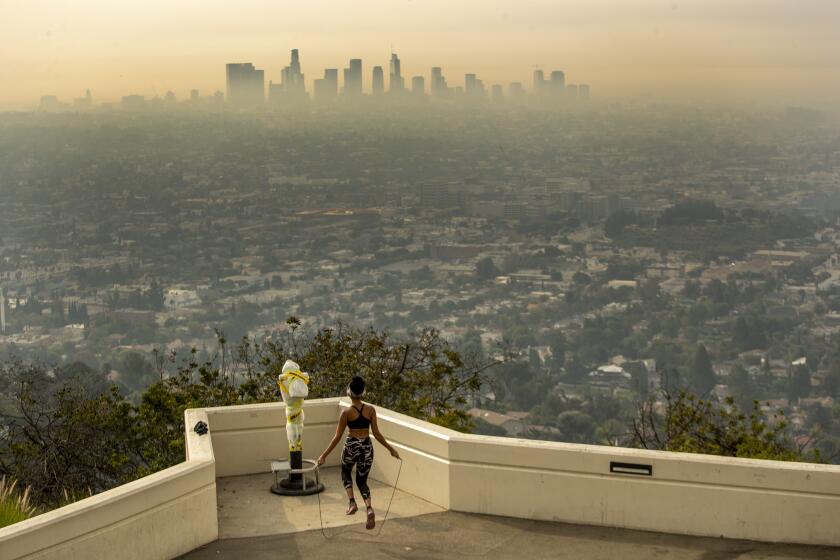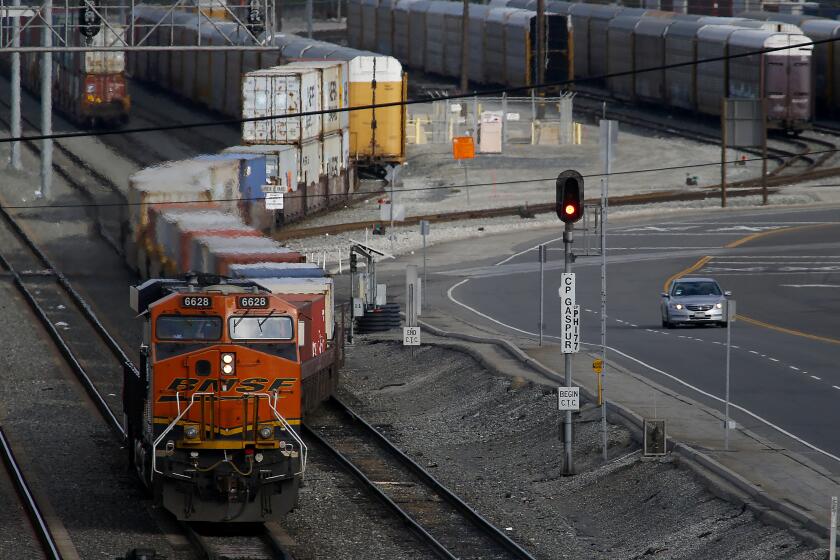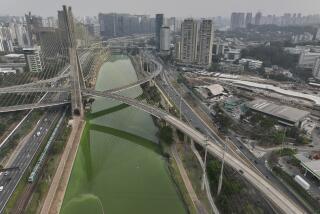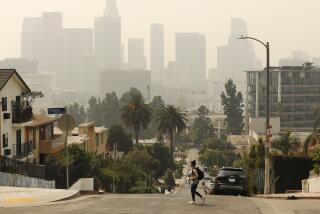Toxic air engulfs New Delhi, closing schools, halting work and bringing out the masks
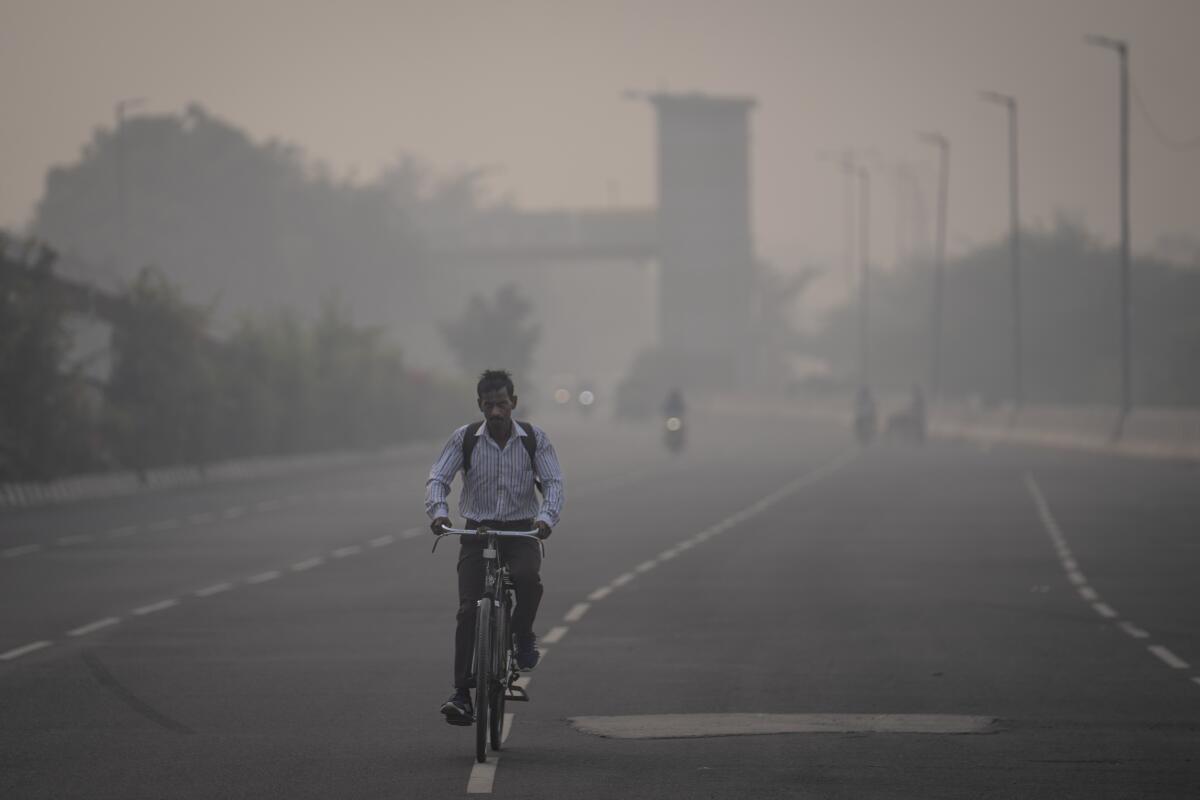
NEW DELHI — A toxic blanket of gray smog hangs over New Delhi’s monuments and high-rises. Schools have been ordered shut and construction banned. People are back to wearing masks.
In the Indian capital, it is that time of the year again. Authorities are struggling to rein in severe air pollution levels, an annual and chronic health crisis that disrupts the lives of more than 20 million people in the city every year.
On Tuesday, the air quality index veered close to the 400 mark for tiny particulate matter, a level considered hazardous and more than 10 times the global safety threshold, according to SAFAR, India’s main environmental monitoring agency. It was the fifth consecutive day of bad air in the region.
“There’s too much smog. I’m watching the air quality index and I’m scared about this climate,” said Srinivas Rao, a visitor from Andhra Pradesh state who donned a mask as he took a morning walk near the city’s India Gate monument.
Authorities have deployed water sprinklers and anti-smog guns to control the haze and announced a fine of 20,000 rupees — about $240 — for drivers found using gasoline and diesel cars, buses and trucks that create smog. Meanwhile, doctors have advised residents to wear masks and avoid the outdoors as much as possible because the smog could trigger respiratory infections, flu and asthma attacks.
The pollution also threatens to disrupt the ongoing Cricket World Cup, hosted by India, after the Sri Lankan team had to cancel its training session in New Delhi over the weekend before facing Bangladesh on Monday at the Arun Jaitley Stadium.
Long-term exposure to fine particulate pollution may increase the risk of developing dementia, new research says.
Demand for air purifiers has risen in the last week, local media reported.
Residents such as Renu Aggarwal, 55, are worried that the smog will get even worse as Diwali, the Hindu festival of lights, approaches this weekend. The annual holiday features the lighting of firecrackers.
Aggarwal’s daughter has a pollen allergy that worsens with pollution.
“She cannot breathe,” Aggarwal said. “Even though we keep the doors and windows shut in our home, the pollution still affects her so much that even going to the washroom is difficult for her. And she gets breathless.”
Southern California air quality officials want to cut a deal with BNSF and Union Pacific that would shield them from regulation in exchange for voluntary pledges to reduce pollution. Should we worry that the ports of L.A. and Long Beach could be next?
New Delhi tops the list almost every year of many Indian cities with poor air quality, particularly in the winter, when the burning of crop residues in neighboring states coincides with cooler temperatures that trap hazardous smoke.
The burning of crop remnants at the start of the winter wheat-sowing season is a key contributor to the pollution in northern India. Authorities have been trying to discourage farmers by offering cash incentives to buy machines to do the job. But smoke from crop-burning still accounts for 25% of the pollution in New Delhi, according to the Indian Institute of Tropical Meteorology in Pune.
New Delhi saw a sharp 32% rise in tiny particles in the air between 2019 and 2020, a dip of 43.7% in 2021, and a steady increase in 2022 and 2023, according to Respirer Living Sciences, an organization that monitors air quality and other environmental factors.
The severe pollution crisis affects every resident in the city, but the millions who work outdoors are even more vulnerable.
News Alerts
Get breaking news, investigations, analysis and more signature journalism from the Los Angeles Times in your inbox.
You may occasionally receive promotional content from the Los Angeles Times.
Gulshan Kumar, who drives an auto rickshaw, said his nose, throat and eyes regularly fill up with dirt in the air.
His children plead with him to return to his hometown in Bihar state. “They ask me why I work in this polluted and diseased city,” he said. “If I had had employment back home, I wouldn’t have come to Delhi to work.”
More to Read
Sign up for Essential California
The most important California stories and recommendations in your inbox every morning.
You may occasionally receive promotional content from the Los Angeles Times.
